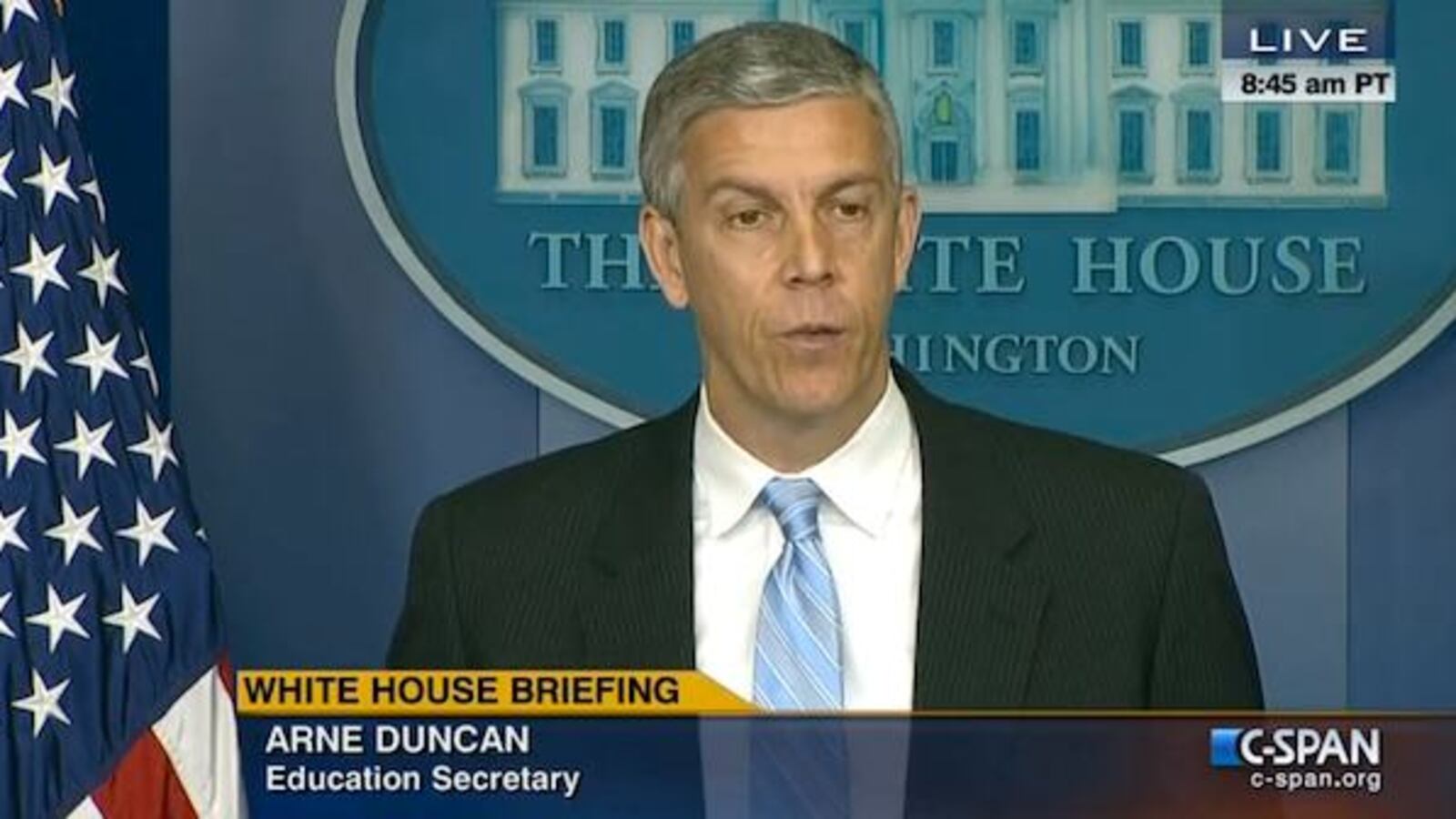Education Secretary Arne Duncan has some updated marching orders on how to ensure all students have effective teachers — orders that could require action from state departments of education, including Colorado.
Duncan unveiled the “Excellent Educators for All Initiative” Monday with a letter to chief state school officers, a White House news conference, a roundtable discussion with teachers and principals and a conference call with reporters.
In Colorado, 5 percent of all students were enrolled in schools with 20 percent or more first-year teachers in 2011-12, compared to a 4 percent rate nationwide. Colorado also had higher percentages of black and Hispanic students enrolled in such schools, according to a DOE “Data Snapshot – Teacher Equity” document released in March.
While lack of educator experience isn’t necessarily equivalent to low quality of teaching, concentrations of new teachers in low-performing schools has been a concern for policymakers for some time. Discussion of equity also includes placement of highly effective teachers in such schools, as well as teachers who have appropriate subject-matter expertise.
In unveiling the latest effort, Duncan said, “All children are entitled to a high-quality education regardless of their race, zip code or family income. It is critically important that we provide teachers and principals the support they need to help students reach their full potential. Despite the excellent work and deep commitment of our nation’s teachers and principals, systemic inequities exist that shortchange students in high-poverty, high-minority schools across our country. We have to do better.”
The new federal initiative has three elements:
- States are requested to analyze their data and consult with teachers, principals, districts, parents and community groups to create locally developed educator equity plans. States have to report by April 2015. An earlier set of such plans were required by the federal government in 2006.
- A $4.2 million program of federal assistance to help districts implement their plans.
- Publication of “educator equity profiles” for each state by DOE this fall.
The problem has been a topic of discussion in Colorado for several years, dating back to a 2006 report titled “Shining the Light – The State of Teaching in Colorado.” (See text of report here.)
But the issue hasn’t been the focus of major legislative or policy initiatives. State reform efforts have been focused on implementation of new standards, rollout of the new educator evaluation system and improvements in early literacy, all things that districts had to juggle for the first time in the school year that just ended.
In a statement Monday afternoon, the Colorado Department of Education noted, “Even before today’s announcement by the U.S. secretary of education, Colorado has been working with each district with high numbers of minority and poverty students and a high percentage of novice teachers to address any inequitable distribution of teachers through its state improvement plan.” (Districts and schools have to file improvement plans as part of the annual accreditation and rating process.)
CDE has developed a data tool to help districts analyze staffing patterns and “identify equity staffing between schools,” according to Janelle Asmus, CDE chief communications officer. (See the tool here. Use the links on the right of the page to search any school district.)
The CDE statement sounded a cautionary note about the initiative, saying, “While Colorado has been working with districts and schools on these issues, the commissioner of education is extremely wary of any additional burdens that may be placed on districts which are already stretched beyond their means.”
The DOE collects some data about students and novice teachers in the civil rights information it compiles. Here are U.S. and Colorado figures from the Data Snapshot – Teacher Equity report, which covers the 2011-12 school year.
Nation
- 4 percent of all students were enrolled in schools with 20 percent of more first-year teachers
- 1 percent of white students
- 4 percent of black students
- 3 percent of Hispanic students
Colorado
- 5 percent of all students were enrolled in schools with 20 percent of more first-year teachers
- 4 percent of white students
- 7 percent of black students
- 8 percent of Hispanic students
Last year the DOE considered tying state action on teacher equity to renewal of NCLB waivers but backed off the idea. (Colorado’s waiver was renewed last week – see story.)
Leaders of the nation’s two largest teachers unions were briefed on the plan Monday and were generally supportive, if cautious.
“The Excellent Educators for All project, with its goal of attracting, retaining and supporting good teachers for all of America’s children, especially those in the highest-need schools, is necessary and important—but the actual work of achieving a comprehensive solution to inequity is far from easy,” said Randi Weingarten, president of the AFT.
Dennis Van Roekel, outgoing president of the National Education Association, said. “We urge the Department of Education and the Obama administration to take a comprehensive approach to equity that includes access to high quality pre-school and early learning opportunities and access to high quality, rigorous curriculum, adequate facilities and other learning conditions in schools and attention to out-of-school needs so we are educating the whole child.”


